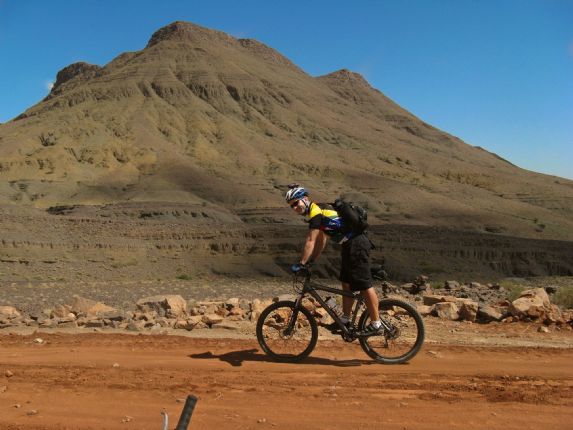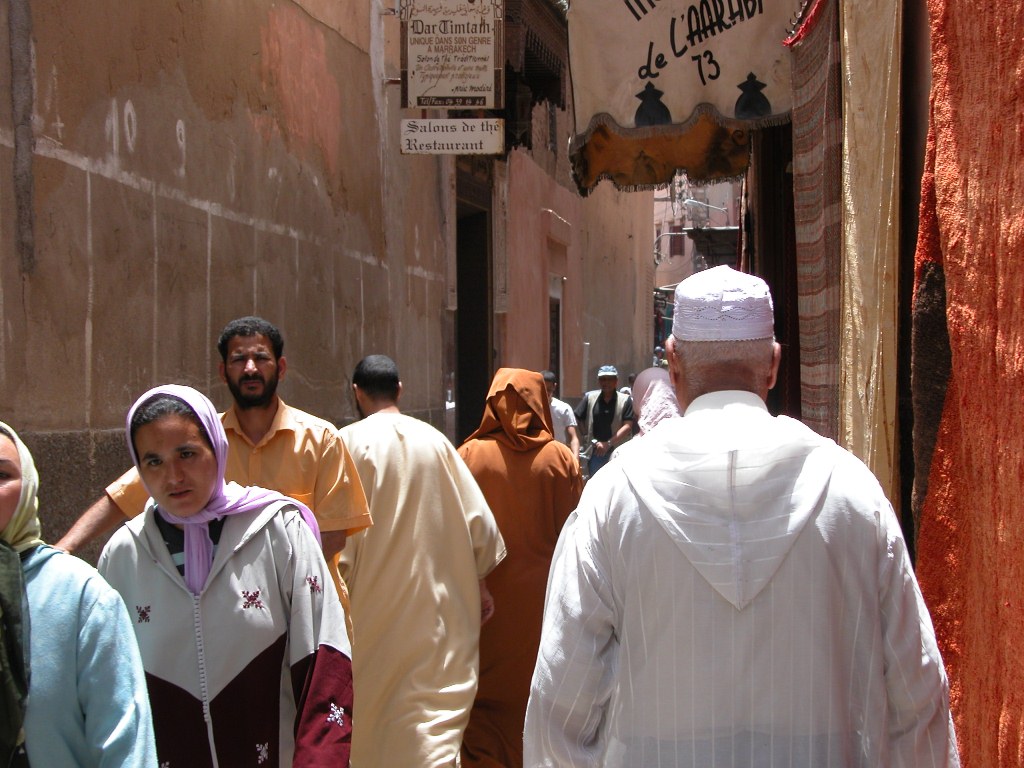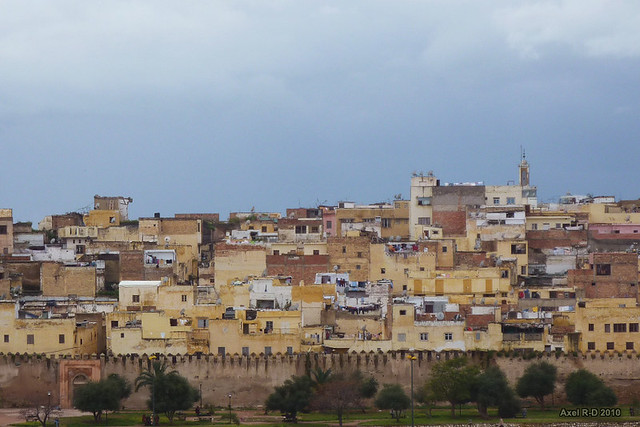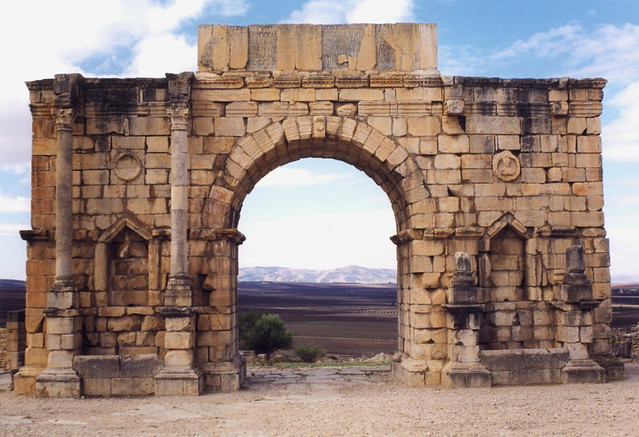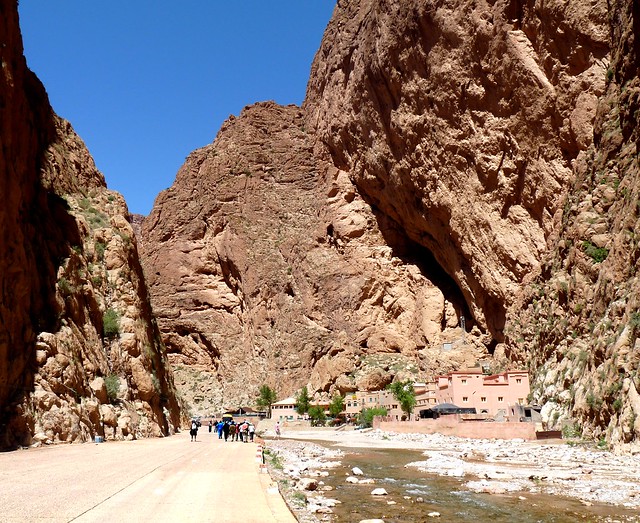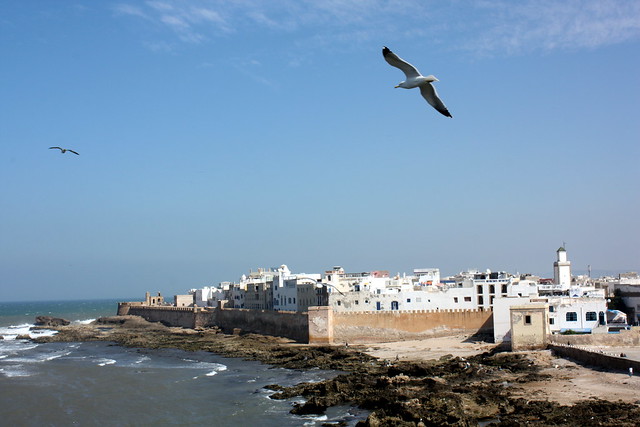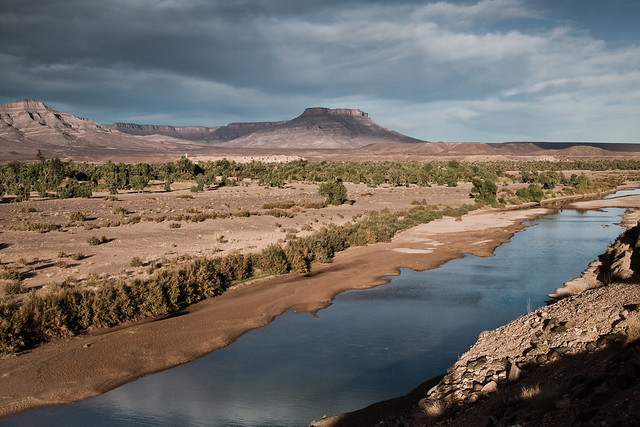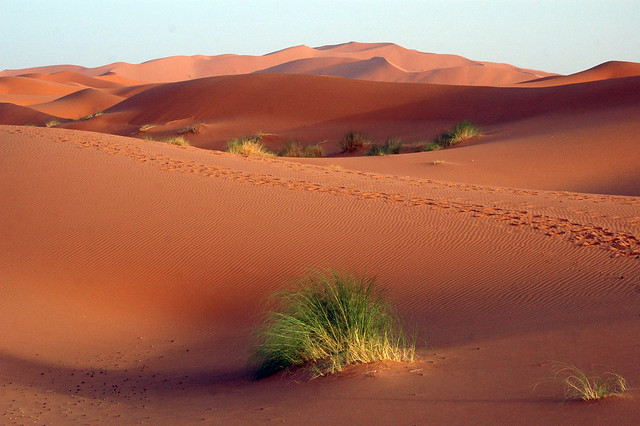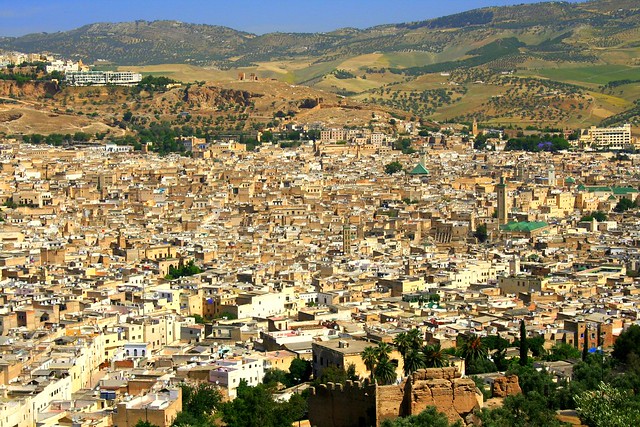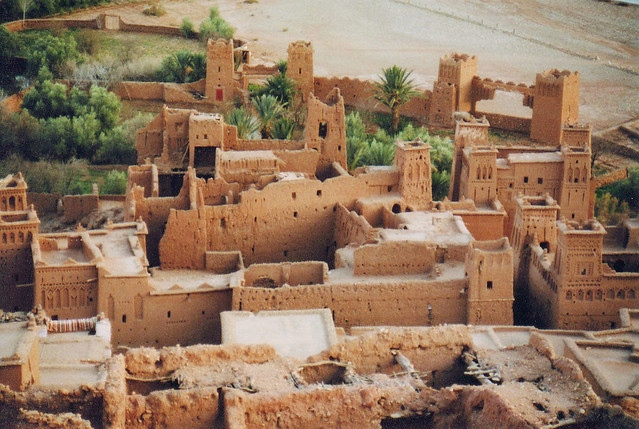Marrakesh remained a political, economic and cultural centre for a long period. Its influence was felt throughout the western Muslim world, from North Africa to Andalusia. It has several impressive monuments dating from that period: the Koutoubiya Mosque, the Kasbah, the battlements, monumental doors, gardens, etc. Later architectural jewels include the Bandiâ Palace, the Ben Youssef Madrasa, the Saadian Tombs, several great residences and Place Jamaâ El Fna, a veritable open-air theatre.


Founded in 1070-1072 by the Almoravids (1056-1147), capital of the Almohads (1147-1269), Marrakesh was, for a long time, a major political, economic and cultural centre of the western Muslim world, reigning in North Africa and Andalusia. Vast monuments dating back to that period: Koutoubia Mosque, with the matchless minaret of 77 metres, an essential monument of Muslim architecture, is one of the important landmarks of the urban landscape and the symbol of the City, the Kasbah, ramparts, monumental gates and gardens. Later, the town welcomed other marvels, such as the Badiâ Palace, the Ben Youssef merdersa, les Saâdians tombs, Bahia Palace and large residences. Jamaâ El Fna Square, inscribed on the Representative List of the Intangible Cultural Heritage, is a true open-air theatre that always amazes visitors. Due to its still protected, original and well conserved conception, its construction materials and decoration in constant use, and its natural environment (notably the Gardens of Aguedal, Ménara and the Palm Grove (Palmeraie) the plantation of which is attributed to the Almoravids), the Medina of Marrakesh possesses all its initial components both cultural and natural that illustrate its Outstanding Universal Value.
Criterion (i): Marrakesh contains an impressive number of masterpieces of architecture and art (ramparts and monumental gates, Koutoubia Mosque, Saâdians tombs, ruins of the Badiâ Palace, Bahia Palace, Ménara water feature and pavilion) each one of which could justify, alone, a recognition of Outstanding Universal Value.
Criterion (ii): The capital of the Almoravids and the Almohads has played a decisive role in medieval urban development. Capital of the Merinids, Fès Jedid (the New town), integral part of the Medina of Fez, inscribed in 1981 on the World Heritage List, is an adaptation of the earlier urban model of Marrakesh.
Criterion (iv): Marrakesh, which gave its name to the Moroccan empire, is a completed example of a major Islamic capital of the western Mediterranean.
Criterion (v): In the 700 hectares of the Medina, the ancient habitat, rendered vulnerable due to demographic change, represents an outstanding example of a living historic town with its tangle of lanes, its houses, souks, fondouks, artisanal activities and traditional trades.
Integrity (2009)
The boundary of the property inscribed on the World Heritage List is correctly defined by the original ramparts that enclose all the requisite architectural and urban attributes for recognition of its Outstanding Universal Value. A revision of these boundaries is envisaged for increased protection of the surroundings of the property.
Nevertheless, the integrity of the property is vulnerable due to pressure from urban development, uncontrolled alterations to upper floors and construction materials of the houses, the abandonment of the Khettaras (underground drainage galleries) and exploitation of the palm groves.
Authenticity (2009)
The ramparts, the Koutoubia Mosque, the kasbah, the Saâdians tombs, the ruins of Badiâ Palace, Menara water feature and pavilion, are examples of many monuments that clearly reflect the Outstanding Universal Value of the property. The authenticity of the inner urban structure and of the monuments remains intact. It is ensured by qualified workmanship carrying out restorations in accordance with standards in force. Reconstruction and redevelopment work carried out in the heart of the historic centre generally respects the original volume and style. The use of traditional materials in these restoration operations has tremendously revived the artisanal trades linked to construction (Zellige, lime plaster (tadallakt), painted and sculpted wood, plastering, wrought ironwork, cabinetmaking, etc.) in addition to trades linked to furnishing and decoration.
Protection and management requirements (2009)
Protection measures are essentially related to different laws for the listing of historic monuments and sites, in particular Law 22-80 concerning heritage. In addition to this legislation, each of the more important monuments of the Medina of Marrakesh is protected by specific regulatory texts. Over and above the local services that are involved with the protection of the Medina, the Regional Inspection for Historic Monuments and Sites (attached to the Ministry for Culture) is specifically responsible for the management, restoration, maintenance and conservation of the historic monuments on the one hand, and on the other, the examination of requests for building and development permits and the control of building sites in the Medina, thus constituting a guarantee for a sustainable protection of the site.
The Architectural Charter of the Medina of Marrakesh, developed by the Urban Agency of Marrakesh in cooperation with the Regional Inspection for Historic Monuments and Sites, comprises a management toolfor the safeguarding of the architectural, urban and landscape heritage of the Medina. It will be applied through the establishment of a specific advisory structure. A convention for the implementation of this Charter was signed on 11 November 2008 between the concerned partners.
Long Description
The capital of the Almoravids and the Almohads played a decisive role in the development of medieval planning. Marrakesh (which gave its name to the Moroccan Empire) is the textbook example of a large Islamic capital in the Western world. With its maze of narrow streets, houses, souks (markets), traditional crafts and trade activities, and its medina, this ancient settlement is an outstanding example of a vibrant historic city.
Marrakesh was founded in 1071-72 by Youssef ben Tachfin on the site of the camp where Abou Bekr had left him in charge. From that point forward, Marrakesh was no longer an occasional stopping place for the Almoravids. It became the true capital of these conquering nomads who succeeded in stretching their empire from the Sahara to the Ebro and from the Atlantic to Kabylia.
The original layout of the medina dates back to the Almoravid period from which there still remain various monumental vestiges (ruins of the so-called Abou Bekr Kasbah, Youssef ben Tachfin Mosque and Ali ben Youssef Palace, not far from the Koutoubia, the pool and the 'Koubba' of Ali ben Youssef Mosque which were discovered in 1955, Bab Aylan gate, etc.). In essence it is an adaptation of the older urban model of Marrakesh.
The walls of the medina were built in 1126-27 following the order given by Ali ben Youssef. The planting of the palm groves, which at the present still cover a surface area of roughly 13,000 ha to the east of the city, has also been credited to the Almoravids. When in 1147 this dynasty bowed to the attacks of the Almohads led by Abdel Mou'men, the task of purification that was carried out did not spare the monuments which, for the most part, were destroyed by the victors. Nevertheless Marrakesh remained the capital. Under the Almohad rulers (1147-1269), Marrakesh experienced new and unprecedented prosperity.
Between 1147 and 1158, Abd el Mou'men had the Koutoubia Mosque built upon the ruins of the Almoravid foundations. Its incomparable minaret, key monument of Muslim architecture, is one of the major features of the cityscape and is the actual symbol of the city. The ruler's successors, Abou Yacoub Youssef and especially Yacoub el Mansour, were the ones who truly renovated the capital. They built new quarters, extended the city wall, fortified the Kasbah (1185-90) which was a prolongation of the city to the south with its own ramparts and gates (Bab Agnaou, Bab Robb), its mosque, palace, market, hospital, parade-ground and gardens. These leaders strengthened their control over their domains by planting crops (Menara to the west) and by civil engineering achievements, the best known of which are the Tensift Bridge and the kettara network in the palm groves.


The decline of Marrakesh, which began during the conquest of the city by the Merinids in 1269, never went beyond the point of no return, as is illustrated by a number of non-negligible constructions (Ben Salih Mosque and minaret, not long after 1321). The rebirth of the capital under the Saadian rulers (1510-1669) led to a new blossoming of the arts, as borne out by the ruins of the El Badi Palace and the Saadian tombs, whose precious architecture is isolated from the rest of the Kasbah by a wall. Some of the elements making up these refined and sumptuous constructions came from afar, such as the marble columns from Carrara which Montaigne observed being cut in Tuscany 'for the king of Morocco in Berberia'. Also dating back to the Saadian period is the restoration of the Ben Youssef Madrasa and the building of several fountains decorated with gypsum work and woodwork (Mouassine, Chrob ou Chouf and Bab Doukkala Fountains).
Under the reign of the Alawite dynasty, Marrakesh, the temporary capital, was graced with a new mosque, madrasas, palaces and residences harmoniously integrated into the homogeneous unit of the old town, which was surrounded by 10 km of clay and lime and beaten-cob ramparts. Beyond the walls were the great traditional areas of greenery: the palm groves, the Menara and, to the south, the Agdal gardens that were redesigned by Moulay Abd er Rahman (1822-59).
morocco culture,moroccan food,morocco food,moroccan cuisine,morocco beaches,moroccan meal,beaches in morocco,moroccan culture,hercules cave,hercules cave morocco
